Open Channel Flow inside a 180-Degree Bend, ANSYS Fluent Simulation Training
$120.00 Student Discount
The problem simulates a two-phase flow (water and air) inside an open channel with a 180-degree arc using ANSYS Fluent software.
Click on Add To Cart and obtain the Geometry file, Mesh file, and a Comprehensive ANSYS Fluent Training Video.To Order Your Project or benefit from a CFD consultation, contact our experts via email ([email protected]), online support tab, or WhatsApp at +44 7443 197273.
There are some Free Products to check our service quality.
If you want the training video in another language instead of English, ask it via [email protected] after you buy the product.
Description
Project Description
The present problem simulates two-phase flow (water and air) inside an open channel with a 180-degree arc using ANSYS Fluent software. To simulate the mentioned two-phase flow, the multiphase VOF model (Volume of Fluid) have been used; Because this two-phase flow is considered free surface currents. Therefore, the VOF model is used to define different phases of the flow. In this multiphase model, airflow is defined as the primary phase and water flow as the secondary phase. Also, because the free surface of water flow inside the canal, the open channel flow model has been used; So that the level of water flow is equivalent to 0.2 m. A stream of water with a height of 0.2 m and a mass flow of 94.83 kg.s-1 enters the channel and, after passing through an arc path of 180 degrees, exits the channel’s outlet at a pressure equal to atmospheric pressure. Also, for the upper level of the duct, which is for the passage of airflow, the relative pressure limit condition equal to 0 pascals has been used.
Geometry & Mesh
The present model is designed in three dimensions using Design Modeler software. The present model is a channel with a rectangular cross-section that has an arc path of 180 degrees. The rectangular cross-section of the canal has a width of 1 m and a height of 0.7 m.
We carry out the model’s meshing using ANSYS Meshing software. The mesh type is structured. The element number is 2316480. The following figure shows the mesh.
CFD Simulation
We consider several assumptions to simulate the present model:
- We perform a pressure-based solver.
- The simulation is steady.
- The gravity effect on the fluid is equal to -9.81 m.s-2 along the vertical axis.
The following table represents a summary of the defining steps of the problem and its solution:
| Models | ||
| Viscous | k-epsilon | |
| k-epsilon model | RNG | |
| near wall treatment | standard wall function | |
| Multiphase Model | VOF | |
| number of Eulerian phases | 2 (air & water) | |
| formulation | implicit | |
| VOF sub-models | open channel flow | |
| interface modeling | sharp | |
| Boundary conditions | ||
| Inlet | Mass Flow Inlet | |
| free surface level for water | 0.2 m | |
| bottom level for water | 0 m | |
| mass flow rate of water | 94.83 kg.s-1 | |
| mass flow rate of air | 0 kg.s-1 | |
| Outlet & Up | Pressure Outlet | |
| gauge pressure | 0 pascal | |
| Walls (Inner-Outer-Bottom) | Wall | |
| wall motion | stationary wall | |
| Methods | ||
| Pressure-Velocity Coupling | SIMPLE | |
| pressure | second order | |
| momentum | second order upwind | |
| volume fraction | compressive | |
| turbulent kinetic energy | first order upwind | |
| turbulent dissipation rate | first order upwind | |
| Initialization | ||
| Initialization methods | Standard | |
| gauge pressure | 0 pascal | |
| velocity (x,y,z) | 0 m.s-1 | |
| water volume fraction | 0 | |
| air volume fraction | 1 | |
Results
At the end of the solution process, three-dimensional contours related to pressure, velocity, kinetic turbulence energy, the volume fraction of water, and the volume fraction of air inside the 180-degree arc channel are obtained.

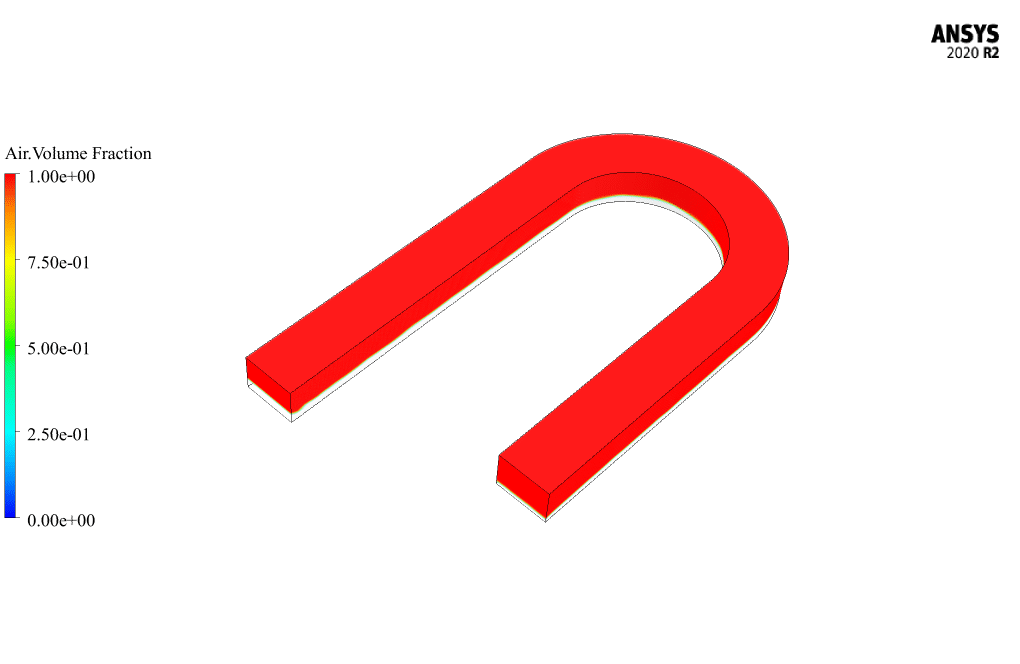
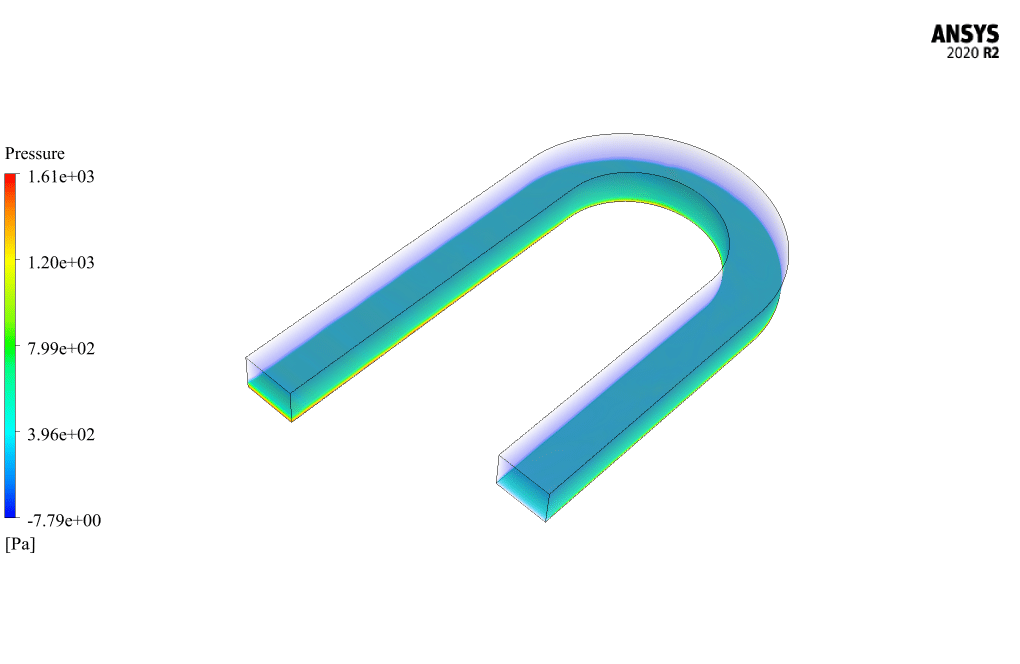
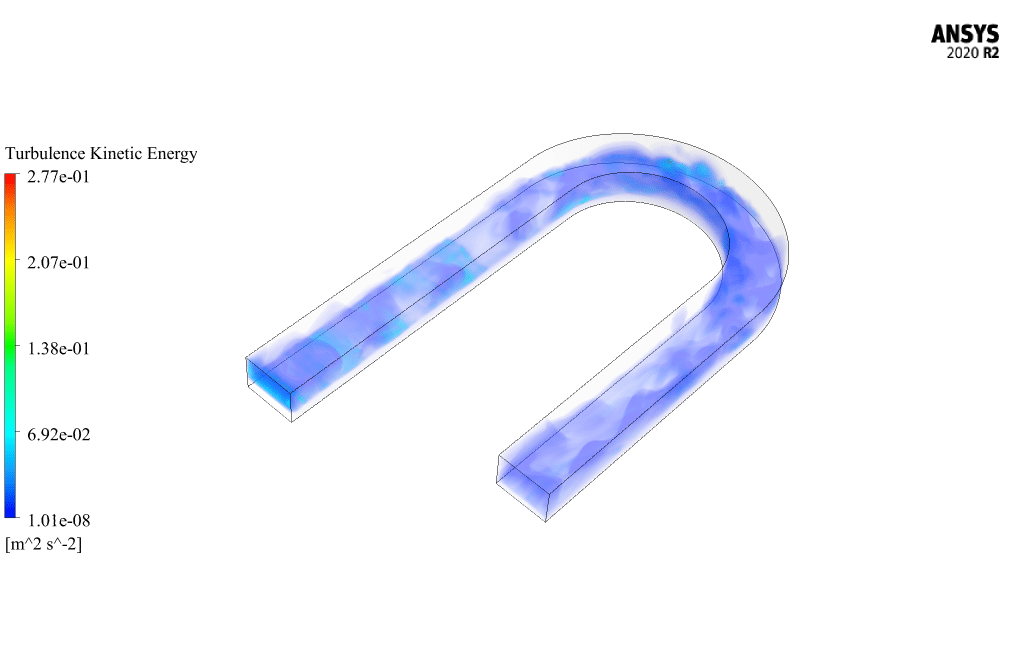
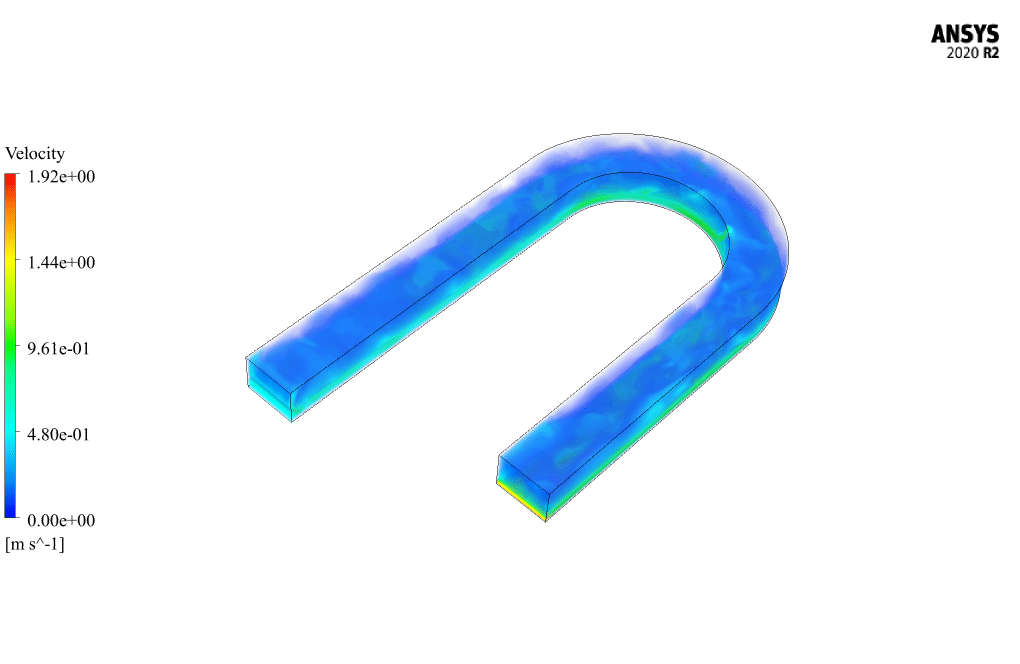
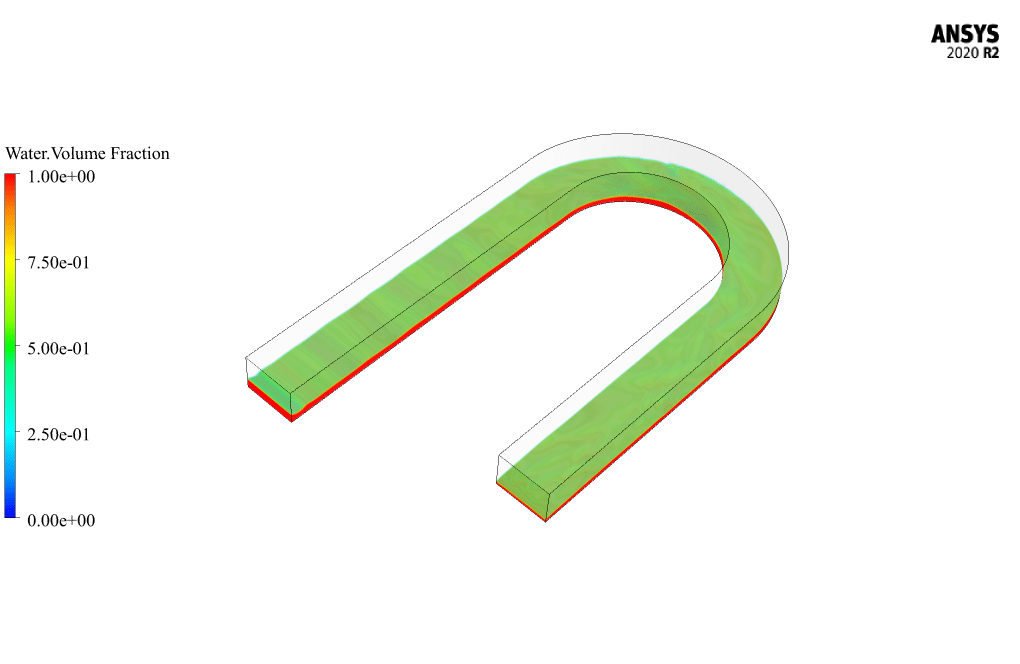
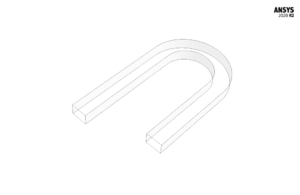

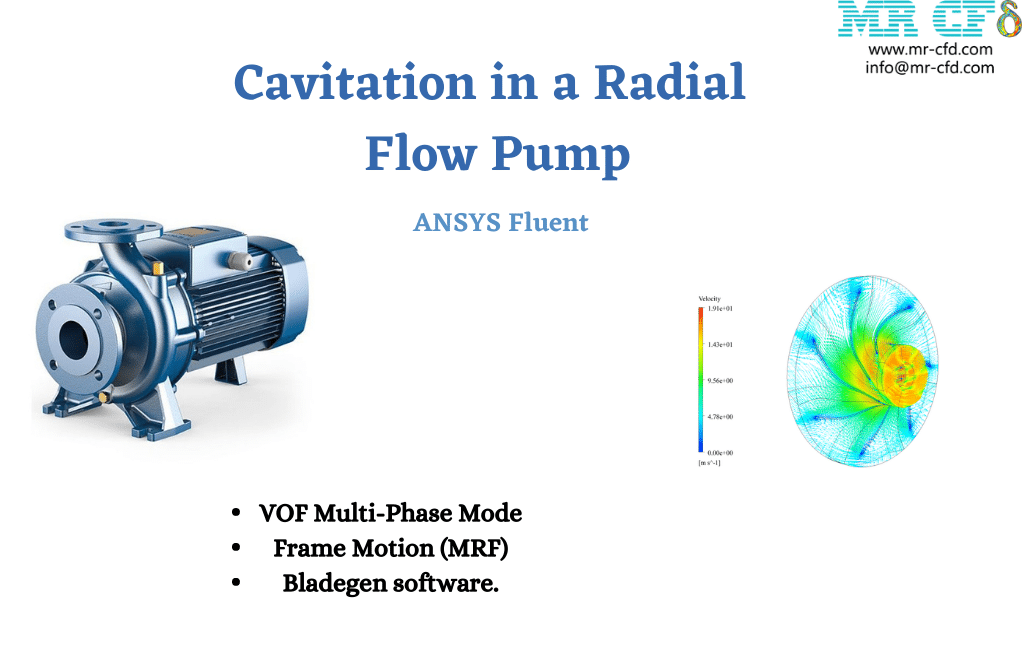
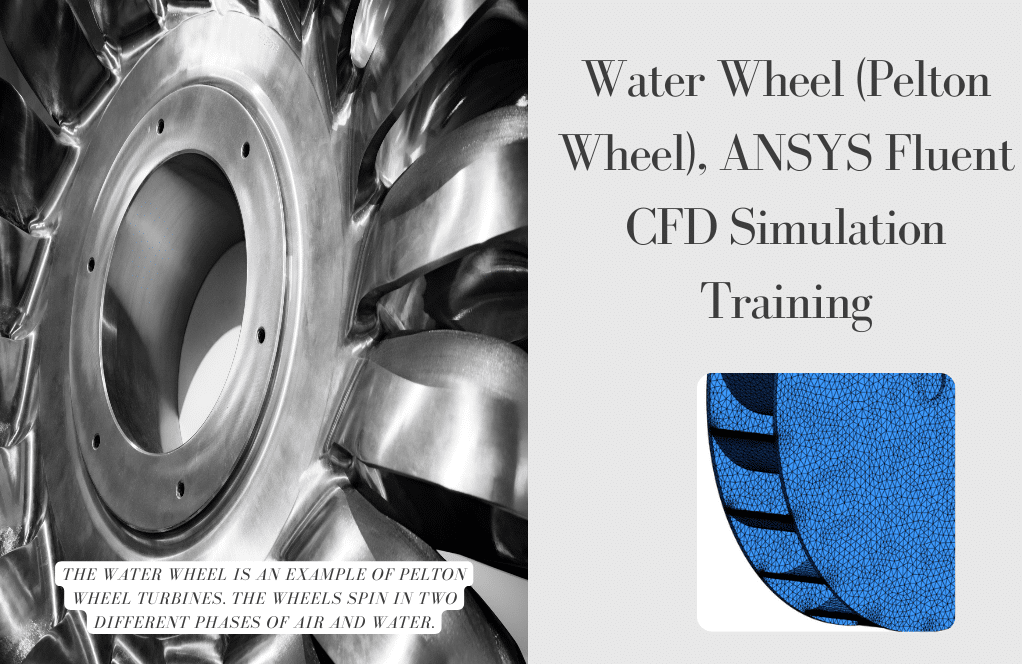
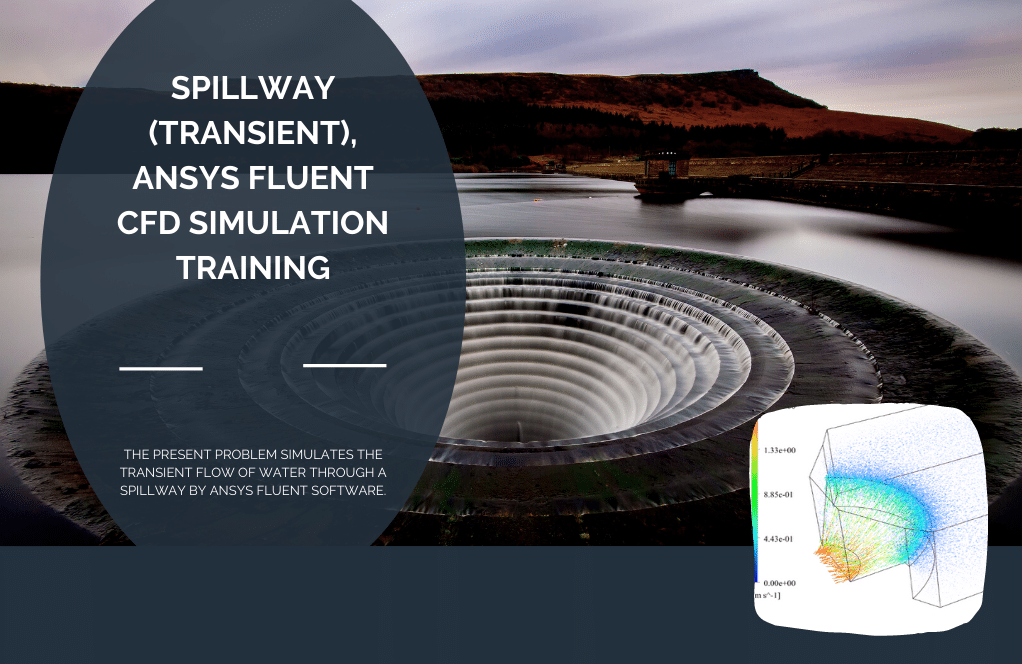
Prof. Rusty Spencer –
I’m really pleased with how comprehensive the simulation training seems. The inclusion of detailed boundary conditions and solution methods is fantastic for understanding the complexities of open channel flow, especially in such a curved geometry.
MR CFD Support –
Thank you for your kind words! We’re delighted to hear that you found the ANSYS Fluent Simulation Training for open channel flow valuable and informative. Our goal is always to provide thorough and detailed training material that aids in the understanding and application of CFD concepts. If you have any more feedback or require further learning materials, please don’t hesitate to let us know!
Ressie Kunze –
The training material seems thorough. The attention to realistic boundary conditions and detailed mesh description is highly beneficial for anyone trying to understand multiphase flow simulations!
MR CFD Support –
We greatly appreciate your kind words and are pleased that our attention to detail is beneficial for your understanding of CFD simulations. Thank you for your positive feedback!
Kenny Runte –
I’ve always been curious about how air-water interactions are simulated in CFD. Could you please explain more about the utilization of the VOF model in this training for simulating those interactions?
MR CFD Support –
In the Open Channel Flow simulation, the Volume of Fluid (VOF) model is used to track the interface between the air and water phases, enabling simulation of free surface flows. The VOF model solves for each fluid’s volume fraction within each computational cell. It can handle two immiscible fluids by tracking the volume fraction of one of the fluids in each cell; here, air is considered the primary phase and water the secondary phase. The model assumes that within any given cell, the volume fractions of all phases sum up to unity. The VOF model also applies a surface sharpening technique to keep a distinct interface between the air and water. By recognizing and applying different physical properties to each phase, coupled with appropriate boundary conditions, accurate simulation of air-water interactions and the free surface can be achieved.
Geovany Stokes –
The training was comprehensive and the simulation well-structured. I was able to understand the complex dynamics of open channel flow inside a bend thanks to this course. Keep up the excellent work!
MR CFD Support –
Thank you for your positive feedback! We’re thrilled to know our Open Channel Flow simulation training helped you understand the complex dynamics involved. Your appreciation motivates us to continue delivering high-quality educational content. If you need any further assistance or have more questions in the future, don’t hesitate to reach out.
Elton Bode –
I’m highly impressed with the results from the Open Channel Flow simulation in a 180-Degree Bend. The clarity of the three-dimensional contours for pressure and flow parameters is remarkable!
MR CFD Support –
Thank you for your kind words! We’re thrilled to hear that our simulation results exceeded your expectations. Providing clear and comprehensive data is pivotal to us, and it’s great knowing that the detailed contours for the pressure, velocity, and volume fractions help in visualizing and understanding complex flow situations. Your feedback is greatly appreciated!
Prof. Tavares Becker –
How realistic are the simulation results for the 180-degree bend, considering the structured mesh and the models used in ANSYS Fluent? Can we rely on these results for engineering projects?
MR CFD Support –
The simulation results are quite realistic as they utilize the well-established VOF multiphase model and k-epsilon RNG turbulence modeling, in conjunction with high-quality structured meshing in ANSYS Fluent. The simulation also considers the physics of open channel flow and pressure-based solver settings to further ensure real-world applicability. Engineering decisions often depend on incorporating strong CFD foresight, and the methodology applied here provides a trustworthy source for making informed project assessments.
Marianne Kshlerin –
I find it fascinating how fluids behave differently in various scenarios. Is there an explanation for how the water and air interact in the bend, specifically the effect on turbulent kinetic energy levels?
MR CFD Support –
In the simulation of open channel flow inside a 180-degree bend, the interaction between water and air, particularly at the interface, can cause complex flow patterns and turbulence. As the water flows through the bend, it undergoes centrifugal forces which can lead to secondary flow patterns. These secondary flows enhance the mixing and transport of turbulence kinetic energy. The air above the free surface can affect the flow stability, specifically if there are variations in air pressure or wind conditions. This interaction is depicted in the simulation results, where you can observe the distribution and variations of turbulent kinetic energy caused by the combination of shear forces at the water-air interface and the channel geometry.
Bradford Padberg –
This project took my understanding of multiphase VOF and open channel flows to a whole new level. Your detailed methodology resulted in incredibly clear and vivid simulation results. I can now grasp the subtleties of simulating free surface currents much better. Thanks for such a comprehensive tutorial!
MR CFD Support –
Thank you for your positive feedback! We are thrilled to hear that our ANSYS Fluent simulation training was able to enhance your understanding of multiphase flow and open channel simulations. Your mastery of these concepts is essential, and we’re glad to have contributed to it. If you have any more questions or need further learning material, don’t hesitate to get in touch. We’re here to help!
Keyon Turcotte II –
The level of detail in the simulation is impressive! The use of the VOF model to accurately show the two-phase flow dynamics inside an open channel with such a complex bend really demonstrates the capabilities of CFD in engineering applications.
MR CFD Support –
Thank you for your positive feedback! We are pleased that you appreciated the level of detail and found the demonstration of the VOF model and its capabilities useful. It’s great to hear that the training provided value in understanding the complexities of open channel flow simulation.
Freda Crooks –
I’m impressed by the level of detail in the simulation! Were there any specific challenges in modeling the free surface currents in the 180-degree channel bend, and how were these addressed?
MR CFD Support –
Thank you for your kind words! In such simulations, accurately capturing the free surface flow dynamics, especially around a sharp bend like the 180-degree channel, can be challenging due to the potential of flow separation and complex interface interactions between the air and water phases. However, the multiphase VOF (Volume of Fluid) model is very capable of handling these challenges. It allows for a clear definition of the phases and can track the interface quite well. ANSYS Fluent’s VOF model combined with the Open Channel sub-model accounts for the water surface and airs just above the free surface. To address challenges like these, careful meshing to ensure an adequate number of elements in regions of the free surface is crucial, and that was achieved excellently in the simulation.
Marcella Douglas –
Amazing detail and clarity in the simulation setup. It feels like this tutorial would equip any user with the tools needed for setting up and solving complex free surface open channel flows. The coverage from geometry creation to final results, including each setup step is commendable.
MR CFD Support –
Thank you for your kind words. We’re glad to hear that you found our simulation training to be both detailed and clear. We strive to provide users with comprehensive guidance needed to tackle complex CFD cases. Your feedback is much appreciated!
Tanya Hickle –
The training was exceptionally detailed. The balance between theory and practical application through ANSYS Fluent assignments really helped me understand complex CFD concepts.
MR CFD Support –
Thank you so much for taking the time to leave this excellent review. We’re thrilled to hear that our balance between theory and practice met your learning needs. Your satisfaction is our priority, and as affirmed by your review, we pride ourselves on our comprehensive and practical approach. If you have any further questions or feedback, feel free to reach out!